https://cool.sa/wp-content/cache/breeze-minification/js/breeze_cf53b91f8b3ad06b28e17e9a4fe085effd8f1a74cce2d6031b7b9161125c084ec2abb751bcff4835360d74f54f713eb44cc22fc45ff1139616780837fb83eac0.js
https://cool.sa/wp-content/cache/breeze-minification/js/breeze_7178d11f9f45fba9c81dc394efde2188e0a4eeda3ad4358efd7513b34e2c0ac131c8499691d3bf38d780f96dc4fe52cb10c878e4324056d4d309259a73a216aa.js
https://cool.sa/wp-content/cache/breeze-minification/js/breeze_148e703c8e51086459b9a6fc0f431e832fc96d9547e09419696ce0cc7ac441f1414cfff58ec4af3a82a2da97d4f3f3e3490b801a81e7277b8a55a5f460394752.js
https://cool.sa/wp-content/cache/breeze-minification/js/breeze_5ca1c7a3915866005da1ece8a1c4ed088e94935d9caaa1daab0dfae80f4e7520dcb1b7d270cf43b96bb4373a254a182b93e6e46cc40e89023c02ceb82d48749f.js
https://cool.sa/wp-content/cache/breeze-minification/js/breeze_ac1262fe7a4f8823dc93d4f8a912e0313e6a37380a2934324f0ced1183bcb789907520b8cea0d67c8c486d6c5a65761ff9375cc6a4b88a17512827826e566f08.js
https://cool.sa/wp-content/cache/breeze-minification/js/breeze_143b2d8d92807bc6521f0e61f841fa54c0db71ec807773acbd0d3412eadf4387c31414554e2e01f5bcefbd4cf2be9891e3664d6ce9888142d84349648349e0f2.js
https://cool.sa/wp-content/cache/breeze-minification/js/breeze_aea7f5a05a5e46774a150b993bedf4bf59d2e91c6f45d3beb2dad052176b5f6d0db0368a5cda8160f69238552bcc6befc507b3f50bd7c3339d5400316e5eb2d8.js
https://cool.sa/wp-content/cache/breeze-minification/js/breeze_291c125ca13d35f2668333c3995c456a806d58b4f4ed76b82206f6e3aff45923a1765958d89cbeca1db91c735096695b2d8f53fd6f4f7cdde9ac28ee539c6ac9.js
https://cool.sa/wp-content/cache/breeze-minification/js/breeze_ea73423e75fb8fdd9464ae4d574f6c99ab626edb417f578ada0f101d1bc05c6a8144dbd713bc1ff2ee90aa4ead9885643e0abf9fbff434ee9187f6da9e8ed6fa.js
https://cool.sa/wp-content/cache/breeze-minification/js/breeze_445965b952e522480d992cbac1de0330707deb2c888b4326de0eadec70e8ae7d8d38a81fdf5c1dec73c6dc9ec94a07c8508a6af3c206ae7c2f8d7a93f6de9ffa.js
https://cool.sa/wp-content/cache/breeze-minification/js/breeze_a129f484f4eb76ec606a085cbf400eeaab623145fe206278cc1d4e7e613c38fc716616f93c2611d07baa17b3c640b3f3f16ffdcb3778418a7dac6a775316caf6.js
https://cool.sa/wp-content/cache/breeze-minification/js/breeze_310f55740f1b3d8923e135657823fa5b8ea014ec8de46039e8d1f522fc9ac8d70c269dc79f902ea439b33f0a6ac3f326efe63d87334f15e8b0fe8756162faf9e.js
https://cool.sa/wp-content/cache/breeze-minification/js/breeze_27f687a7793cd4db8269942a7bbcf377ed81e61c2c1ec92f8faf6048754005a031888d66b625cb9f8d7945220d045d8f18d2e76319d5423414439ff6ebb250bd.js
https://cool.sa/wp-content/cache/breeze-minification/js/breeze_5d59c7da911ec6ca4e60146f13fb3e01756bc49c2fa25866f062ae1c528e2aff4ffb97f9dc2e4e0c4952820b215b46bc6590a5221f90635a57c9bc91fbe5b2e2.js
https://cool.sa/wp-content/cache/breeze-minification/js/breeze_d82da839a4c42dd04af60c5fea906fd797e1b9f09d94c8d7526c6c927b7e8ad0af1eac3232f6a8f91c3c01aa760baacfef1052dcde14d429c5651ad311e38adc.js
https://cool.sa/wp-content/cache/breeze-minification/js/breeze_f41d137c82b9a7adfa5321c8f99492f3bd9df33355a83403caccea9e8de00c84cd92341da51a3e48ffc8f564dc697fda159d7a39bb8861ff9e7b77784443d07c.js
https://cool.sa/wp-content/cache/breeze-minification/js/breeze_4f6a43fe0ee9c48c38992c222a40edf343c0018d482aca0f46e7b7175b4f4ac4f60e416a3641e606b3562457bc032f74bf11ec857a99a779070511ac75b5be71.js
https://cool.sa/wp-content/cache/breeze-minification/js/breeze_63c6f543e8222647f8d2214d1a49bccfc4d1bd1037216115a541d7c78a6a6070b6477d4337b43bafa8976e6806411b2ec35882dcb9da91ad515d7c461a456db7.js
Skip to content Home / Mix Product / Rubber Insulation Self-Adhesive
Rubber Insulation Self-Adhesive ﷼ 143.00﷼ 172.50inc. VAT
About the item
Self-adhesive. Optimal insulation (heat and cold). Reduction of draughts, heat bridges and unwanted noise for more feel-good climate Impact protection on edges and surfaces Universal insulating DIY material for hobby and leisure. Antimicrobial protection against bacterial and fungal growth, no loss of insulation. Odor-reduced formula especially for indoor use Note: THIS PRODUCT CAN ONLY BE SHIPD VIA THE REGULER Z-SHIPPING SERVICE. YOU HAVE TO PICK UP FROM THE SHIPPING OFFICE.
Description Rubber insulation of self-adhesive Size 1mx9m thickness 6mm and 9mm. Made in UAE, the Company Golf-O-Flex.
Difference between self-adhesive and adhesive The term adhesive refers to a sticky substance, while something that is self-adhesive implies that it will stick without wetting or the application of glue to the product.
Self-adhesive used for This adhesive allows the paper to be attached to surfaces without the need for tape or glue. Self-adhesive paper is available in a variety of colors, textures, and sizes to suit any need. With the use of a special glue technology, you can use self-adhesive paper without leaving sticky glue or marks on the surface.
What is insulation adhesive? Insulation adhesives are designed to fasten and secure a wide range of substrates. They come in a variety of different types and application styles to best suit your project needs, whether you need spray, brush, roller, or palm grade.
Foam rubber is a good insulation Rubber foam is such a good insulator against cold and moisture that one of its earliest and most common applications was in manufacturing professional-grade wetsuits for divers. That tells you just how great foam rubber can be at protecting what’s important.
Use of Rubber insulation. Rubber slows down electrons, making it the most natural and efficient insulator in the world. This allows manufacturers to create compact electrical or electronic components with no risk of electricity transfer. Rubber electrical insulators are used for a variety of reasons, including: Energy Efficiency.
Best adhesive for insulation Foamboard Adhesive is a premium-grade formulation for bonding foam board insulation to a variety of surfaces, both interior and exterior. It is compatible with all foam board insulation products and can bond to wood, concrete, brick, and drywall.
Used in insulation Hot glue: Finally, one more adhesive choice for insulation foam is hot glue, but this option comes with conditions. Hot glue does work with insulation foam, but it can also melt the foam a bit.
Glue insulation You can glue it together with almost anything. The key is to make sure you actually clamp it/ weigh it down while it dries. Depending on what you hope the outcome is you can use liquid nails, wood glue, and even foam insulation spray or panel foam adhesive to join pieces together.
Types: Rubber (NBR) Insulation Foam rubber, also known as a sponge or expanded rubber, refers to a type of rubber produced with a foam agent to create an air-filled matrix structure. These types of insulation are available in many different materials, including cotton foil, polypropylene foam and foam insulation.
Adhesive a good insulator Electrostatic discharge resistance: Some adhesive tapes have a low static charge which allows them to insulate and protect electronic components that are sensitive to static electricity. Flame retardant: Many insulating adhesive tapes meet UL150, a test method used to determine the flammability of adhesive tape.
Gratefulness Thank you for choosing us! We are dedicated to giving you the best products possible. If you have any questions, feel free to get in touch.
https://cool.sa/wp-content/cache/breeze-minification/js/breeze_603d00406d192632909223a5b15b158a65133b42e9f9e27c605a11f037540dd31a3c4579cfc2f263bb7d29941783d29364a5e541822c6db05928dab132bc713e.js
https://cool.sa/wp-content/cache/breeze-minification/js/breeze_b90c64ba3996b7a41b17bb33a838dabf45861e3728b335ebdb4bfb0ba74798ee413e71d62778bd442e37803d7e983f4db25c430f794d34fccc6b65a258941d02.js
https://cool.sa/wp-content/cache/breeze-minification/js/breeze_6b82e20e99e8a57178afd50be19a2d5ecbf7062879808d851b3b5aa2b0a8a629ef06413f19dc9a6cd7a22d23e5d67e133fb70ff8030e0f6d6a494260d0085739.js
https://cool.sa/wp-content/cache/breeze-minification/js/breeze_6de117cf7bedcb5f455acf1f0ffc0ef92fe8100b03a46c5deb542b674e0461309678403478c963166b6dc2cfacb5fdda08c5230f047fa607b3b136790489e0f2.js
https://cool.sa/wp-content/cache/breeze-minification/js/breeze_f72b4506a6f6c54a35cf3f07f7ff79987256b6003989852ff7e5839be958283a9b3632855ceeb2a967083211745469a97b591f639d367fd3866d5626956fbc4f.js
https://cool.sa/wp-content/cache/breeze-minification/js/breeze_fd9c6843b94a3297ac1bab3d5c5eeee494dcc14eb91354bb46665ba297181fc9dd6608baa21973cdfbd945efe82f1b5d3347d5f609532e6228c10647bdb35527.js
https://cool.sa/wp-content/cache/breeze-minification/js/breeze_b1c8dec0028f68e04f036c82cb8384a5c024e15da41c885f94745495d53b3d2dc3603b4f263116528356d30439b585eb30ae8dcbe5bc4c1924466e93df90e9b6.js
https://cool.sa/wp-content/cache/breeze-minification/js/breeze_3c61d1904917e309244e15d4d68f830c8e7eaf454bfdd4232d19d4e6d98ddf55c61d1ec5bf29b4b38edf4e68caaae9daf6e0342ef93a3db8ec0816883b5489d5.js
https://cool.sa/wp-content/cache/breeze-minification/js/breeze_bcf41d0b1cbcfc75d6b6564e30bed1c9d0d4a20fa714e91082e0d4bc4bcdbc3ed63422f027a2330770d5ec00c79b5df8b14ce015e556dcd6b70e3205827d7f2c.js
https://cool.sa/wp-content/cache/breeze-minification/js/breeze_a1782e20291aa651bb07d90b173ca5285989327113bb63d94f179dd8772bc1405ca4cb46df378d29e934abbef48e54f26fe7c500984de247c137c230f41274de.js
https://cool.sa/wp-content/cache/breeze-minification/js/breeze_5bfcef1e3d394d66740928bffe44722eaedaa12f784f31be465c9bd4a17158f232488673b5f592c87f7ea261ce392ec2eae62501dffb03a17b529aed8bb44a6a.js
https://cool.sa/wp-content/cache/breeze-minification/js/breeze_07e81038ea14e791cff699d1e986650bcc15a54b37c876fab5efdfe91d7708ddeffc9c631cb738a9af659e50b90c86a5ede779204010177e2065befea52c0071.js
https://cool.sa/wp-content/cache/breeze-minification/js/breeze_11a1f3b8bed1f6a801b95eb74785e1c01a42c0fdba1a86d8d90bfbf560ddd324eb5e948732c2c7d62dfa3394088cce93480333c5aae6676b5c56c3d6a9a19004.js
https://cool.sa/wp-content/cache/breeze-minification/js/breeze_3e529ea0747554a091e74c3de7731937ba057b4610b5f74ceaca6bd9db1d206758d66c720e73d368c9db5f93f73f8d68af0fd84adb03bba6c3012e909766275d.js
https://cool.sa/wp-content/cache/breeze-minification/js/breeze_c768ae84b6cc2c4baf064adf2d14277ab42cd1943aaae2f61a461c08cb41086d2d6e25dec0cff9c51070a167b56ee505116dff104bb608fb67c2003b56c338fa.js
https://cool.sa/wp-content/cache/breeze-minification/js/breeze_5576751b68bdbe23107df7ed6a1f5ff1ae2970742143aa8c3c48e88ae580bc2571b1d2b0bf475ca935a1702a6106b485659ac5bec4ac9545422c53fdd74f05c9.js
https://cool.sa/wp-content/cache/breeze-minification/js/breeze_8a6ebf601512e44d302b2fc86c9d709adbd782156de7f04bfbc8a18c20f975b6768c76ef9c24dfc87e17e43a7009626c3c066d58020bb92e7123250b1d365124.js
https://cool.sa/wp-content/cache/breeze-minification/js/breeze_bab22f1103865614643fcca93b26e0cd63e0ead7877af415d0d1399d7a3aada1b7e3486424a67a434b3bea6ce3d2bf7378e0f1f1f23c4c8bd0cdeaa1e9421b72.js
https://cool.sa/wp-content/cache/breeze-minification/js/breeze_5ad557419836a33ecf67c88fab448798a7d46572eb1c8ebab15184b270a37e9d0d92a83ae6e2c9e27943a29ed3c56b4ac8d2e4737809e8e26e8cf999ae6fac3a.js
https://cool.sa/wp-content/cache/breeze-minification/js/breeze_2de287774d0e023227bf9fa9265f6af358fff11e18ee93ac97527d57b8391d1f160b6f6eb7c4bc0586111a50bab00f3bacc73a49962ae69830227044a1d90500.js
https://cool.sa/wp-content/cache/breeze-minification/js/breeze_4f1b511a5936666ee5f9b21aa350538f8f5a4034f618c1c87e6219a4769ba1884870016310c8da2e4aff7c75d7158ff2057557679987e908d022bd85328d76d6.js
https://cool.sa/wp-content/cache/breeze-minification/js/breeze_10b23c76cdb175b7de8eb1b77b30c52331ae8925b6204dc66fc8b1741cd9c54902310f1e9e177a1f918cf1aeef5ee162f4855f70e96d2349eb89a8afcf150aa6.js
https://cool.sa/wp-content/cache/breeze-minification/js/breeze_92ec09b49b481183738d6c4cbe06ef2577ac0cd4b8e34a530a1ca3159efcbe0d2bf7028b51e0d851e606bb14c6a369a1261c4059b1530587fd052ccbb9f93991.js
https://cool.sa/wp-content/cache/breeze-minification/js/breeze_d1e370bf9514d5e0aa349a161f0f2d0dbbfcf87652bae8854158a6ebf4430e2b6b545a69a3a1d9a30edec45694b8069926fff43b8f2a81a009dd6c1d5b431625.js
https://cool.sa/wp-content/cache/breeze-minification/js/breeze_1cf71b8e9b3d3562b2c14644f1e6a00c1b351a8d0b9153a4676a0c004ce4344f707159fd6434c4d95f707d97ebbb57eaafb26092996a52d38260d59b80df51c7.js
https://cool.sa/wp-content/cache/breeze-minification/js/breeze_1b1497bd014409b0423152290002e695dcb59accc1ad3fdd4a45f6931d109ef2ee28ed18a0b2915966480c5c8d05c756a970ea90f1ab073d95ac502f08b4c935.js
https://cool.sa/wp-content/cache/breeze-minification/js/breeze_0285428b6ab7e99f5b92118bd7b2b09c8af487753a508e6683347b271168fccff7129099ed3d1dec5f73d968a7a97bce16bdf96397c5f38876c3cc2cc5aee2c5.js
https://cool.sa/wp-content/cache/breeze-minification/js/breeze_7e87f817d011c4face7390f8ae0c453f61beb00a26bc139addbe620b8935da622028d6d1dff086c9b446d238fff76f8b580e795aec6ca915fbc6ec6e2ebc12fd.js
https://cool.sa/wp-content/cache/breeze-minification/js/breeze_24d8405a46a2cd51f17282e1ba5595a1f2bff57c80383d0d366e005fc8c2f655d66c97aff74cca2fe7e3fbc9b4b11cda60feaf1fa7cd7c6230a4b53538159aad.js
https://cool.sa/wp-content/cache/breeze-minification/js/breeze_ec8ca930deaef573370fa83dc76f2449c3613a26424a5443511d23348e0fd95c5ebbef1ff53038d75d5081ad2ec74db6b46daa7cc450d605178b6ad66b9dcf4c.js
https://cool.sa/wp-content/cache/breeze-minification/js/breeze_b7926cab2c0b45431c6b45b381ae26840ff2fa4a892e69d8b490ab57ec8c1b877ec8b296e72c1e2783462cf1298592fccecb4356aa371d73d8b37e0377f8f416.js
https://cool.sa/wp-content/cache/breeze-minification/js/breeze_271ca7a483dac099997128bc80557bee361d4eade6e37e316cbfdf43d229e0ac27a3e2facd37456e233e8b687f3355371febfb5c15596131055ee750c11ae84c.js
https://cool.sa/wp-content/cache/breeze-minification/js/breeze_5868d9ba7fa99c17ffbaf4c7d38f38fb9bc0bb525179dbc5249145f4ad00763076275ce343efdd865c112fe274fec226b28e052e7d8148a74a78f1d965ae0d2b.js
https://cool.sa/wp-content/cache/breeze-minification/js/breeze_9d7e6f41b8b84223e5c708690cee597118849eb1fe78027632512809d94df7581257d4700aef6ef172a5717e9eb0fbc276b834025c587625922f7fac42e066ab.js
https://cool.sa/wp-content/cache/breeze-minification/js/breeze_10393cc7a0eb2d79304f943a1a800b69ce317a91ed75f137d0f060a8ad9f886f76a74cb828d5aef6d00a1f941ddf90e543bdde9178e697cd5bcc07e721e8df95.js
https://cool.sa/wp-content/cache/breeze-minification/js/breeze_0d92dba2d94665b9f1b6563787be5ade9c520801014587d3f131bcf1cf475df460e5d76e9c39e3f21abac3fd399b8d2acf6a1827f5be692da77bca4dbe1df8ce.js
https://cool.sa/wp-content/cache/breeze-minification/js/breeze_908f0601264270ba574bbd2ad100418f094a3bfc9effc627326b11cd8dc110338e593639a08dd5b82ccb2c0386af49450162e8fb9630fd04ff11b39e85493fa8.js
https://cool.sa/wp-content/cache/breeze-minification/js/breeze_63060a30df17e2a3518562dca7fdead7fc7c4ea5d493e1523c3cb1f4bf12d683ceff0605388d278ecf69f4e0a6d746dac59292c22967682a61d1f7b6fec41d8f.js
https://cool.sa/wp-content/cache/breeze-minification/js/breeze_46102121140e4236a942762343df6b98326b2cbfc30c6d2aad7134a0b6dc0a2a6a75ac11bdd5d2e14fd6b6ad14d401fc365dc07510e31d7122ee9898a72a226e.js
https://cool.sa/wp-content/cache/breeze-minification/js/breeze_cef453b0cd9b50c942dfe57b40fd65037ebf2e7577ac2d631192aabefbfd3f576d68dca7242ec3fadeee75b0d447d8e8a60e01f68e7588f337f439dafebc5783.js
https://cool.sa/wp-content/cache/breeze-minification/js/breeze_adc337e56d6a8ef9ff77307d6e9b187369c8644b28cc89b1ae9669daca31a1e9f4c929cd6261c5208ec64d28970409b84de27ce9a3b1fd93639b57516a5799fa.js
https://cool.sa/wp-content/cache/breeze-minification/js/breeze_8083ad51447a0d24df4ed7bea3d5412f4dfba254d97529aa8dcf02159c84337f800e3566422dadcf09a80d8c1435b63d2e59235b085c7097878fb4600fb0d1fb.js
https://cool.sa/wp-content/cache/breeze-minification/js/breeze_8a5b4122c5eb7066db71a01a34af3b57c6bc2cef703ed3928a8b709388cbd10c4131f9ded722023f7f6b0a682a060de87772f63d900e3c3c7600cd699c9b0230.js
https://cool.sa/wp-content/cache/breeze-minification/js/breeze_f168c036d06d4cb9a7cfcb94b3c54eb7ccbba55218102793531dd307d4c074e01b16319d2bb8ba801eea136168a6a91620b49521ed4b2e54f637c517937a566c.js
https://cool.sa/wp-content/cache/breeze-minification/js/breeze_aebe9c4f0f7ac2f2d1b4915e42384009339c893e282e52440bf2f5cce627007d09e721451a50e242a2217fe723716e778a63c6c30cc920703fb670c8af010af7.js
https://cool.sa/wp-content/cache/breeze-minification/js/breeze_61454d10f4aff0f21b3a3865f4f67e70dc4c46d9f73d6b3e6f3019fddab023062aed5048178f04414c998b70e241a5987f73a63ac851cd87bd2373d4dc85b56c.js
https://cool.sa/wp-content/cache/breeze-minification/js/breeze_dcbab8c3fcd89ab85f36f848cd9742fdb185f94f006adf976ba08548d62a30b73b752804db0ac6c8832d2a627cdc5d5a3812b72d3c81a7ae4feacf55fe183952.js
https://cool.sa/wp-content/cache/breeze-minification/js/breeze_c6ffc67e69df3c7315d65484def08123a612d72eec5747cb9beeb20b09d54feed333dce858d72f94bce6cb2a0218beaea9978439dc3bc7e6898c8d81925c01ab.js
https://cool.sa/wp-content/cache/breeze-minification/js/breeze_fa3adfa51d96f9d8df6701d338a5ebb954ca93d1366f8c4833469457aaf0843dac5215e7091f498dff16e888031410429566b11e1a2b7ab107ca01cd81abd396.js
https://cool.sa/wp-content/cache/breeze-minification/js/breeze_4e12a53d8087871021b1e2767d6f2b5f4380381bc30fd48ec1933c2415d7ed374a8efb80d09558ca4dab2d48a50153db3e8a029e0a57a501b2b06ad5b8587e64.js
https://cool.sa/wp-content/cache/breeze-minification/js/breeze_55e92ae934da275a830b744b86dd36e03bb87e3df1ce81a5c7d7c91653bf227b772ea239c40b048411d85bf546f4b24d454cd49385a596ec1313d33b394b23dc.js
https://cool.sa/wp-content/cache/breeze-minification/js/breeze_7cf03fb8b2bcbea3d14a915c929183d53a0e75da2e31a8b17dbd50ce87370ad6e2428a5194beba6f03d37786a8efb0be28c14b1f3ec8bd24e3c7f803c885278c.js
https://cool.sa/wp-content/cache/breeze-minification/js/breeze_5f25fbacfa4a603aa9f79ce88b26a4068d06689a1e90d379a75becfa6e3362a403269def65db071696d4e699c695e8bfd94dd987d3c86197b7e22ccaae7eb2f2.js
https://cool.sa/wp-content/cache/breeze-minification/js/breeze_e34041082a053058be47ce996c6a27c7d8f660d217d4bbb88c76e0f9302a767cd08c533555b0e79ed70a2cf82bc37efcd15640e4336ebbddb45da2965532eaf4.js
https://cool.sa/wp-content/cache/breeze-minification/js/breeze_d57da9abfef16337e5bc44c4fc6488de258896ce8a4d42e1b53467f701a60ad499eb48d8ae790779e6b4b29bd016713138cd7ba352bce5724e2d3fe05d638b27.js
https://cool.sa/wp-content/cache/breeze-minification/js/breeze_06826b854af8cbe00f7b5099b3d842b714edd450a87e914c3f38f85216e6a60d16570462a460e9c4fd120108860fa646ffca0d7872c5ff801b1f37a6c2131d3f.js
https://cool.sa/wp-content/cache/breeze-minification/js/breeze_8f040aeeb8d792829e88704c0b1a4395cf1b2102ca3eddbcdb93744f80629cac326b674fe9e574453f60fc56b55b1367300b6bf4256e15667b39133160db3130.js
https://cool.sa/wp-content/cache/breeze-minification/js/breeze_832fb2bd3177d9430b9736e4ab91dbf94c481262ad913e3d27ac61359bbbae4b78f94c1db27a8e0c81f26b2daa626a1e6f91ec28f995a5301acf7df401eb4e82.js
https://cool.sa/wp-content/cache/breeze-minification/js/breeze_a890fd1fd05fe4349abec35d2c655894eb94673bcfa26ead7e134a9f9c2d873524b274bfca817d853a652bd80f18158fb228856eafcbc2b98736bcfa8c7aa4fb.js
https://cool.sa/wp-content/cache/breeze-minification/js/breeze_7ccf5414d4fb40708c551c93f137820cbdb1f812bb95f9fd7879f1231f9390e69040efce7758b3f8c07f0b6864269e2574c82e57e3b08c4bb09b59485e0a67a8.js
https://cool.sa/wp-content/cache/breeze-minification/js/breeze_b0d34bb95c4cf4a624dc9cf329c8328dcf237b090332bcd2a7f5cc48c64790fd4b5f1cea9799c7579aebd17ba2d6aa88435dae10063edba58225533bcfe6869e.js
https://cool.sa/wp-content/cache/breeze-minification/js/breeze_8cc11fea17cdfe1b3c5c9f3bf1ace4754ac31d29ed006ec41dccd9bb8cf5acbd0c40535ed4c59c497cf3327e83421783679713e34381c2d688c47612d98e53a7.js
https://cool.sa/wp-content/cache/breeze-minification/js/breeze_6e41d37de824c5e0ef341fbc7afe3c896401965a806987a412c5b66aedd44f485929e8a85dc23b3028859094a903d93a752abfd51ec130fa7423a459ecb58cc9.js
https://cool.sa/wp-content/cache/breeze-minification/js/breeze_f3b3e5af077eb8f79928d8c7b9bd45847992fc66461efe7f734a44a28d75d9db6b08a31c3637941824a3acfa9a817cc9913a13ecc5ae08fd24679ccdc60038ac.js
https://cool.sa/wp-content/cache/breeze-minification/js/breeze_03eb2e32a3d153dc7594910aec41f6b126a55b0a8dc711daa4f2f8e8549ad107a7e09ca21030e4d2137a7ddf8d93d0c3041be3b7a0e4bd25c502b0136c57c049.js
https://cool.sa/wp-content/cache/breeze-minification/js/breeze_30fcf5af5d87137205854f4c3472aea0015408be31450ae90e10879b2fea596d3bf15a23b7706f808a9818e9f4d78b13fda6a4c8681cb5f6db8a94f9dd90c30c.js
https://cool.sa/wp-content/cache/breeze-minification/js/breeze_fa177c0c688d4b2923a1999f66c9a3cba22ed203084297cd54211eaaefd54bbf87b420db444aafff836d9259b38e9dadc1580a6bc94d486bbdb7af83e092a29f.js
https://cool.sa/wp-content/cache/breeze-minification/js/breeze_e9fdae644ccce0c68145c891ef1507028628b5c00c07a5f30571504158f111c252f16627d405eb3ed4b30062c01936309f443145d0fc8e6be52446829edb08bd.js
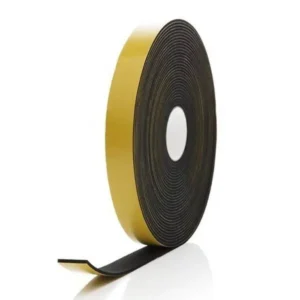
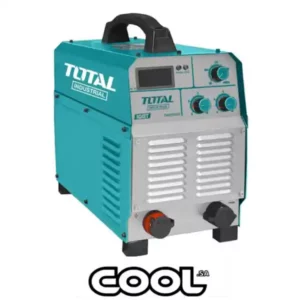
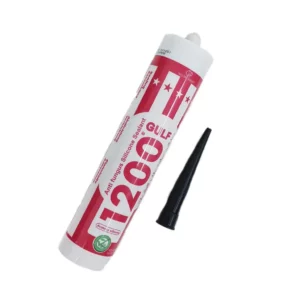
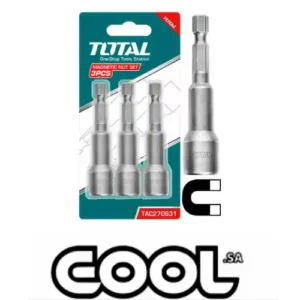

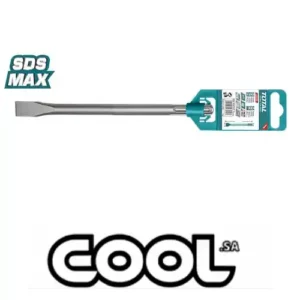
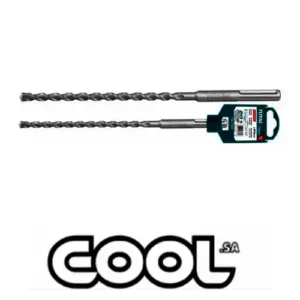

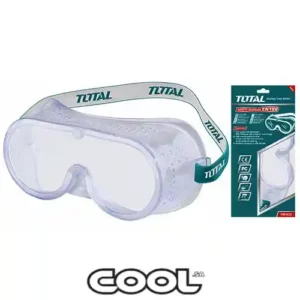






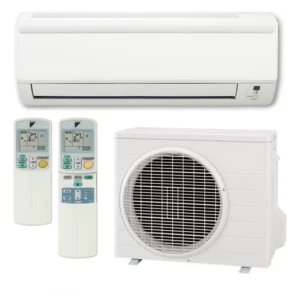
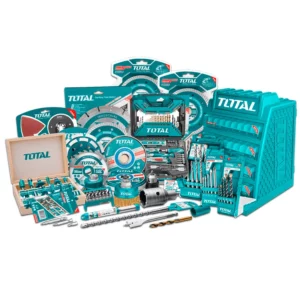
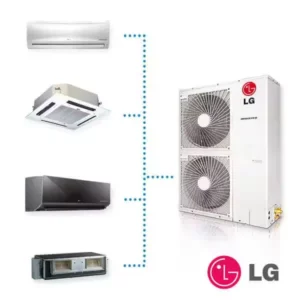
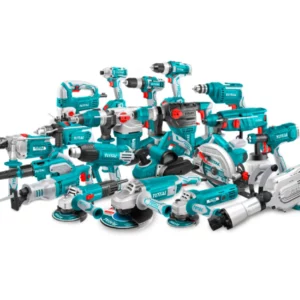
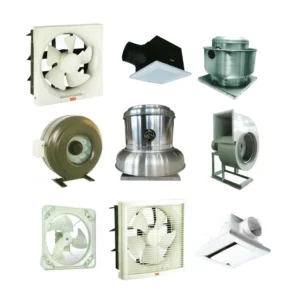

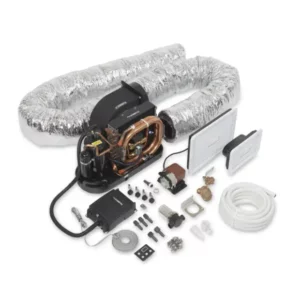
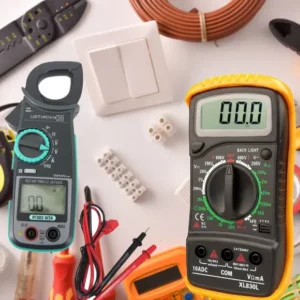



Reviews
There are no reviews yet.